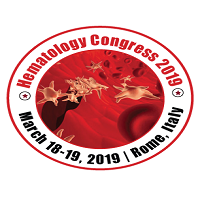
Janette Bester
University of Pretoria, School of Medicine, RSA
Title: An ultrastructural and viscoelastic study of the hypercoagulable state of breast cancer patients and the implications for the disease
Biography
Biography: Janette Bester
Abstract
Statement of the Problem: Breast cancer patients are at an increased risk for thrombotic events such as deep vein thrombosis (DVT) and venous thromboembolism (VTE), drastically affecting survival and quality life of patients post treatment. It has been proposed that this increased risk is caused by cancer associated inflammation induced hyper coagulation, a key factor involved in thrombus formation.
Methodology & Theoretical Orientation: This study utilized microscopy and rheological techniques to examine coagulation components during clot formation, in order to obtain a better understanding of how changes to these
components may increase thrombus formation and thus the risk of thrombotic events. Whole blood from treatment naïve breast cancer patients were compared to whole blood from healthy controls. Routine clinical tests were used to obtain an overall clinical picture of each participant. Scanning electron microscopy was used to study the fine ultrastructure of the red blood cells and platelets. Thromboelastography (TEG) was used to study the changes in clot
dynamics during coagulation.
Findings: SEM showed platelets to be activated as well as a presence of spontaneous fibrin fibre formation. Also, red
blood cells from the patient group showed more irregular surface membranes, increased agglutination and eryptosis
when compared to healthy controls. Results from the TEG showed that clots form faster in breast cancer patients with increased strength and rigidity, thus revealing the hypercoagulable nature of whole blood in this patient group.
The results in this study have revealed the marked differences in coagulation and associated blood components between healthy controls and treatment naïve breast cancer patients.
Conclusion & Significance: They provide a greater understanding of clot formation dynamics and have shown that even in a small sample size, breast cancer patients are at an increased risk of thrombotic events, traceable through
rheological techniques. This justifies further investigation into the utilization of these techniques in a clinical, point of care setting, in order to increase the chance of survival and quality of life for these patient’s post-treatment.

